Till the Clouds Roll By

Brief Synopsis
Cast & Crew
Richard Whorf
June Allyson
Lucille Bremer
Judy Garland
Kathryn Grayson
Van Heflin
Film Details
Technical Specs

Synopsis
On 27 December 1927, following the opening night performance of his Broadway musical Show Boat , world famous composer Jerome Kern visits the neighborhood where he began his career many years earlier. As he sits in his chauffeured limousine, Jerome remembers his early days as a young songwriter and the day he arrived at composer James I. Hessler's home seeking professional advice: While preparing to leave for England to write a symphony, James tells Jerome that he is leaving because he has become disillusioned with the mediocrity of American music. James dismisses Jerome as one of the many song-writing hacks who come to him for advice until he hears one of Jerome's beautifully composed melodies.
As James's young daughter Sally and Jerome play the song for him, James realizes that his visitor is destined to become a great song-writing success. The two composers become fast friends, and before James leaves for England, he advises Jerome to "think big" and not waste his time writing frivolous songs. Jerome takes the advice to heart, but becomes increasingly discouraged by his inability to sell his works. After concluding that Broadway is no longer hospitable to American composers, Jerome decides to try his luck in Europe and sets sail for England.
Jerome enjoys a happy reunion with James and Sally, who calls Jerome "Uncle Jerry," and the three spend an afternoon at a fair. There Jerome gets an idea to use swings to go along with a song he has written. The idea is immediately incorporated into a musical show produced by George Edwards. Following the show, Charles Frohman, a theatrical producer from New York, asks him to write four songs for his upcoming show in New York.
One day, while riding his bicycle through the English countryside, Jerome meets and falls instantly in love with a young woman named Eva. A romance between the two flourishes, but Jerome soon finds himself on a ship bound for America, where rehearsals for Frohman's new show are soon to begin. Jerome's first Broadway show, The Girl from Utah , proves a great success, but while he and James collaborate on a complete score for a new show, Frohman leaves for England to search for new talent. En route to England, Frohman's ship, the Lusitania , sinks and he perishes. After receiving encouragement from composer Victor Herbert, Jerome resumes his work and composes one Broadway hit after another. Jerome eventually returns to England and marries Eva.
Time passes, and Sally, now an aspiring actress, is given her first break in Jerome's new musical Sunny . However, when the show's producer assigns the title song to Marilyn Miller, Sally deserts both Jerome and her father. A short time later, James dies of heart disease. Following the death of his mentor, Jerome loses his will to compose new songs, but his disillusionment soon fades when he finds Sally singing in a nightclub in Memphis. There Jerome is hired to compose songs for Victor Herbert's next production, Show Boat . Back in New York, Jerome snaps out of his reverie, and is driven by his chauffeur to a party to celebrate the success of Show Boat . Jerome's fame eventually takes him to Hollywood, where he is surprised, but pleased, to learn that Sally has been chosen to sing a song that he has written for a motion picture.

Director

Richard Whorf
Cast
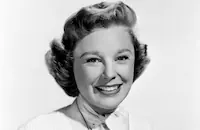
June Allyson

Lucille Bremer

Judy Garland

Kathryn Grayson

Van Heflin

Lena Horne
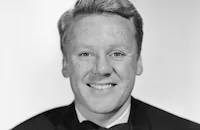
Van Johnson

Tony Martin
Dinah Shore
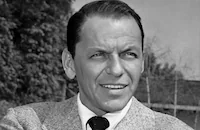
Frank Sinatra

Robert Walker

Gower Champion
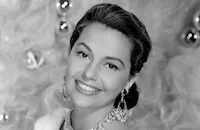
Cyd Charisse
Harry Hayden

Paul Langton

Angela Lansbury

Paul Maxey

Ray Mcdonald

Mary Nash

Virginia O'brien

Dorothy Patrick
Caleb Peterson
Wm. "bill" Phillips
Joan Wells
The Wilde Twins

Esther Williams
Rex Evans
Maurice Kelly

Ray Teal

Byron Foulger
William Halligan
Bruce Cowling
Johnnie Johnston
Herschel Graham
Fred Hueston
Dick Earle
Larry Steers
Reed Howes
Hazard Newberry
Ed Biby
Lew Smith

Larry Williams
James Flato
Leonard Mellin
James Darrell
Tony Merlo
Charles Madrin
Charles Griffin

Lee Phelps

Ralph Dunn
Lucille Casey
Mary Jane French
Beryl Mccutcheon
Alice Wallace
Irene Vernon
Gloria Joy Arden
Mickey Malloy

Alma Carroll
Wesley Brent
George Peters
Harry Denny
Bob Maclean
Frank Mcclure
George Murray
John Alban
Lee Bennett
Jean Andren
John Albright
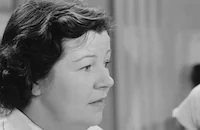
Margaret Bert
Elspeth Dudgeon

Claire Mcdowell
Herbert Heywood
Armand Tanny
George Bruggeman
Rube Schaeffer
Thomas Louden
Ann Codee
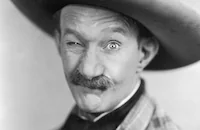
James Finlayson
Tom Stevenson
Lilyan Irene
Robert Cory
George Kirby
Bobby Hale
Tom Pilkington
Al Duval
Penny Parker
Robert E. O'connor
Stanley Andrews
Ernest Galon

Russell Hicks
William Forrest
Roger Cole
Charles Bradstreet
Don Anderson
Bert Moorhouse
Reginald Simpson
Gordon Dumont
Harold Miller
Don Wayson

Howard Mitchell
Paul Gordon
Herbert Weber
Chatita Weber
Tiny Kline
Louis Manley
Jim Grey
Douglas Wright
Dennis Plooster
Leroy Hart
Loren Hicks
Richard Mather
Eugene Dunn
Arnaut Brothers
Paula Ray
Peggy Remington
Crew
Albert Akst
Robert Alton
Peter Ballbusch
Guy Bolton
Guy Bolton
Daniel B. Cathcart
Myles Connolly
Jack Dawn
B. G. Desylva
Dorothy Fields
George J. Folsey
Arthur Freed
Ira Gershwin
Cedric Gibbons
Sydney Guilaroff
Oscar Hammerstein Ii
Grace Hanneford
Otto Harbach
Lennie Hayton
Jean Holloway
Irene
Henri Jaffa
Leonard Joy
Natalie Kalmus
Jerome Kern
Edward Laska
Helen Mcallister
Jimmy Mchugh
Vincente Minnelli
Warren Newcombe
Richard Pefferle
Herbert Reynolds
Helen Rose
Conrad Salinger
Douglas Shearer
Harry Stradling
Kay Thompson
Valles
George Wells
Edwin B. Willis
P. G. Wodehouse
Wally Worsley

Photo Collections
Videos
Movie Clip





Trailer
Film Details
Technical Specs

Articles
Till the Clouds Roll By
While the facts of Kern's life may have been heavily rose colored (as they had been with Ziegfeld), they nonetheless ably fulfilled their purpose - providing a springboard for the wall-to-wall lavish production numbers, featuring the top echelon of the studio stable: Judy Garland, June Allyson, Dinah Shore (whose rendition of "The Last Time I Saw Paris" became a smash hit), Cyd Charisse, and in the picture's sock finale, Frank Sinatra, donned in white, surrounded by the Metro orchestra, as he belts out "Ol' Man River," the highlight of the legendary Kern and Hammerstein collaboration, Show Boat. Lena Horne, likewise performing magnificent lip service to the play's "Can't Help Loving Dat Man," should have made her a shoe-in for the role of Julie La Verne in MGM's 1951 re-make (Ava Gardner was cast instead).
A superb slice of post-war escapist fare, this top notch Arthur Freed production, smoothly directed by Richard Whorf, virtually drips in drop dead Technicolor, courtesy of Harry Stradling and George Folsey's stupendous camerawork. The vocal arrangements by Kay Thompson add another big plus to the proceedings, most notable in the witty Garland segments, specially designed and directed by the star's husband Vincente Minnelli. Regarding the aforementioned "Ol' Man River" climax, it was Kern himself who thought Sinatra perfectly suited for a recording of his famous tune. According to Collier's, he advised the singer, "My idea with that song was to have a rabbity little fellow do it - somebody who made you believe that he was tired of livin' and scared of dyin.' That's how you do it, Frankie." Sadly he never lived to see the praiseworthy result.
Director: Richard Whorf
Producer: Arthur Freed
Screenplay: Myles Connolly, Jean Holloway
Cinematography: George J. Folsey, Harry Stradling Sr.
Editor: Albert Akst
Art Direction: Daniel B. Cathcart, Cedric Gibbons
Music: Jerome Kern (songs)
Cast: June Allyson (Specialty), Lucille Bremer (Sally Hessler), Judy Garland (Marilyn Miller), Kathryn Grayson ('Magnolia'), Van Heflin (James I. Hessler).
C-136m. Close captioning.
by Mel Neuhaus

Till the Clouds Roll By
TCM Remembers Van Johnson - Important Schedule Change on TCM In Honor To Salute VAN JOHNSON
The new schedule for the evening of Tuesday, December 23rd will be:
8:00 PM In the Good Old Summertime
9:45 PM A Guy Named Joe
12:30 AM Thirty Seconds Over Tokyo
2:30 AM The Last Time I Saw Paris
4:30 AM Thrill of a Romance
Van Johnson (1916-2008)
Van Johnson, the boyish leading man whose clean cut, All-American appeal made him a top box-office draw for MGM during World War II, died on December 12 in Nyack, New York of natural causes. He was 92.
He was born Charles Van Dell Johnson on August 25, 1916, in Newport, Rhode Island. By his own account, his early childhood wasn't a stable one. His mother abandoned him when he was just three and his Swedish-born father offered little consolation or nurturing while he was growing up. Not surprisingly, Johnson found solace in singing and dancing lessons, and throughout his adolescence, he longed for a life in show business. After graduating high school in 1934, he relocated to New York City and was soon performing as a chorus boy on Broadway in shows such as New Faces of 1936 and eventually as an understudy in Rodgers and Hart's musical, Too Many Girls in 1939.
Johnson eventually made his way to Hollywood and landed an unbilled debut in the film version of Too Many Girls (1940). By 1941, he signed a brief contract with Warner Bros., but it only earned him a lead in a "B" programmer Murder in the Big House (1941); his contract soon expired and he was dropped by the studio. Johnson was on his way back to New York, but as luck would have it - in the truest Hollywood sense - friends Lucille Ball and Desi Arnaz introduced him to Billy Grady, a lead talent scout at MGM, which was currently Ball's new studio. Johnson was signed up and almost immediately MGM had a star on its hands.
It might have been slow going at first, with Johnson playing able support in films such as Dr. Gillespie's New Assistant and The War Against Mrs. Hadley (both 1942). By 1943 the studio capitalized on his broad smile and freckles and starred him in two of the studio's biggest hits: A Guy Named Joe and The Human Comedy. Those two films transformed him into a boxoffice draw with a huge following, particularly among teenage girls. A near fatal car accident that same year only accentuated the loyalty of his fans, and his 4-F status as the result of that accident created an opportunity for him when so many other leading actors of the era (James Stewart, Clark Gable) were off to war. Johnson was quickly promoted as MGM'sleading man in war heroics and sweet romancers on the big screen: The White Cliffs of Dover, Thirty Seconds Over Tokyo (both 1944), Thrill of a Romance, the episodic Week-End at the Waldorf (both 1945), and a musical remake of Libeled Lady entitled Easy to Wed (1946).
Hits though these were, it wasn't until after the war that Johnson began to receive more dramatic parts and better material such as supporting Katharine Hepburn and Spencer Tracy in the political farce State of the Union (1948). other significant roles included the well-modulated noir thriller The Scene of the Crime, the grim war spectacle Battleground (both 1949), the moving domestic drama Invitation (1952) in which he played a man who is paid to marry a woman (Dorothy McGuire) by her father. Before he left MGM, he closed his career out in fine form with the sweeping musical Brigadoon, co-starring Gene Kelly and Cyd Charisse; and the lilting soaper The Last Time I Saw Paris (both 1954) with Elizabeth Taylor.
After he left MGM, the parts that came Johnson's way weren't as varied, but he had his moments in The Caine Mutiny (1954), the beguiling romance drama Miracle in the Rain (1956) with Jane Wyman; and his lead performance in one of the first successful made for-TV-movies The Pied Piper of Hamelin (1957). By the '60s, Johnson returned to the stage, and played the title role in London's West End production of The Music Man. He then returned to Broadway in the drama Come on Strong. He still had a few good supporting parts, most notably as Debbie Reynolds' suitor in Norman Lear's scathing satire on marital differences Divorce American Style (1967); and television welcomed his presence on many popular shows in the '70s and '80s such as Maude, Fantasy Island, The Love Boat and of course Murder She Wrote. There was one last graceful cameo in Woody Allen's The Purple Rose of Cairo (1985), yet for the most remainder of his career, Johnson worked mainly on the dinner theater circuit before retiring from showbiz completely by the mid-90s. He is survived by a daughter, Schuyler.
by Michael T. Toole
TCM Remembers Van Johnson - Important Schedule Change on TCM In Honor To Salute VAN JOHNSON
Quotes
Trivia
The MGM Records soundtrack album made from this film, originally released on a 78-RPM album set, was the first soundtrack album ever made from a live-action film musical. Previously the only movie musical soundtracks released on records were those of the Walt Disney animated films. (The authentic soundtrack album of MGM's Wizard of Oz, The (1939), with the film cast, was not released until 1956.)
This film made national headlines in 1973 when it was announced that MGM had neglected to renew the copyright on this film, resulting in the film entering public domain. Because of the film being public domain, inferior VHS copies appeared a few years later when video became popular.
'Judy Garland' , who played a minor role, was pregnant with her first daughter, Liza Minnelli.
Notes
The working title for this film was As the Clouds Roll By. While screen credits indicate that the film was "based on the life and music of Jerome Kern," the Hollywood Reporter review noted that the picture took "many and varied liberties" with the telling of Kern's life. Many of the characters in the film, including Oscar Hammerstein, Victor Herbert and Marilyn Miller, were based on well-known figures in the music world. The Variety review indicates that while the character of "Jim Hessler" had no real-life counterpart, Hessler May have been based on arranger Frank Sadler. According to a November 1946 Hollywood Reporter news item, M-G-M negotiated the film rights to Kern's life story with Kern's heirs. Kern, who was born in New York on January 27, 1885, died on November 10, 1945, while the film was in production. The November 1946 Hollywood Reporter news item also noted that M-G-M's deal with Kern's heirs was tied to an agreement in which the studio promised to remake the 1935 RKO film Roberta (see AFI Catalog of Feature Films, 1931-40; F3.3803). Roberta was remade in 1952 under the title Lovely to Look At, directed by Mervyn LeRoy and starring Howard Keel and Kathryn Grayson.
An April 1945 HR news item noted that Till the Clouds Roll By was to mark the directorial debut of set designer Lemuel Ayers. Ayers, however, was replaced by Busby Berkeley in late August 1945. In October 1945, while Vincente Minnelli was directing his wife Judy Garland's sequences, a Hollywood Reporter news item reported a rumor that he was poised to take over direction of the entire production. An October 1945 M-G-M News item noted that Garland's scenes were filmed before the start of "regular production" because the actress was pregnant and was expected to give birth to her child in March 1946. Garland's sequences were completed on November 8, 1945, and by the time filming resumed in mid-December 1945, Berkeley had been replaced by Henry Koster. In addition, photographer Joseph Ruttenberg was replaced by Leonard Smith. Blanche Sewell, who was listed as the film editor in a mid-December 1945 Hollywood Reporter production chart, was eventually replaced by Albert Akst. The extent of the contribution to the final film of Sewell, Ruttenberg, Berkeley, Koster and Smith has not been determined. Production on the film was halted a second time in January 1946, and resumed in mid-March 1946, with Richard Whorf as director and Harry Stradling as photographer. According to a Hollywood Reporter news item, the decision by M-G-M to use Whorf to complete the film was made in mid-January 1946.
A May 1944 Hollywood Reporter news item indicated that Gene Kelly was originally slated to play the part of Kern. Although contemporary sources indicate that actresses Gloria DeHaven and Jacqueline White were set for key roles, and although both their names appeared in Hollywood Reporter production charts throughout the time of production, they did not appear in the released film. Neither did Jeanette MacDonald, who was listed in a number of Hollywood Reporter production charts, or stage actress Imogene Carpenter, who, according to Hollywood Reporter, was set for a "featured spot." Although a September 1945 Hollywood Reporter news item listed William Ferrari as the picture's supervising art director, his contribution to the released film has not been confirmed. According to a July 1946 Hollywood Reporter news item, following a sneak preview of the film, which ran three hours in length, M-G-M began an effort to reduce the picture to two hours. A January 1947 Hollywood Reporter news item noted that proceeds from the Hollywood premiere of the film, which was held on January 16, 1947, were to be donated to the Braille Institute.
Modern sources note that George Sidney directed Frank Sinatra's "Ol' Man River" finale, that Roger Edens contributed to the orchestrations, and that the following individuals contributed to the screenplay: Fred Finklehoffe, John Lee Mahin, Lemuel Ayers and Hans Willheim. Modern sources also note that the screenplay was rewritten following the death of Kern, and that the cast included Sally Forrest and Mary Hatcher as "chorus girls." Kathryn Grayson, who married actor Johnnie Johnston in 1947, and who appeared as "Magnolia Hawks" in the film's Show Boat sequence, later reprised the role in 1951 in M-G-M's complete film adaptation of Show Boat.















